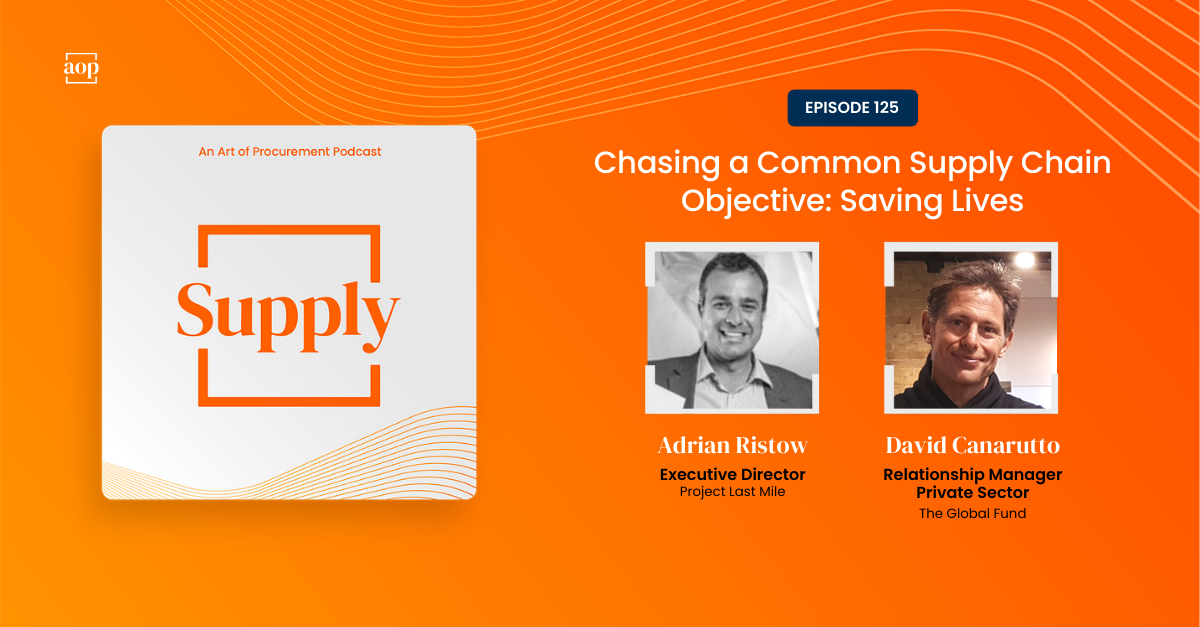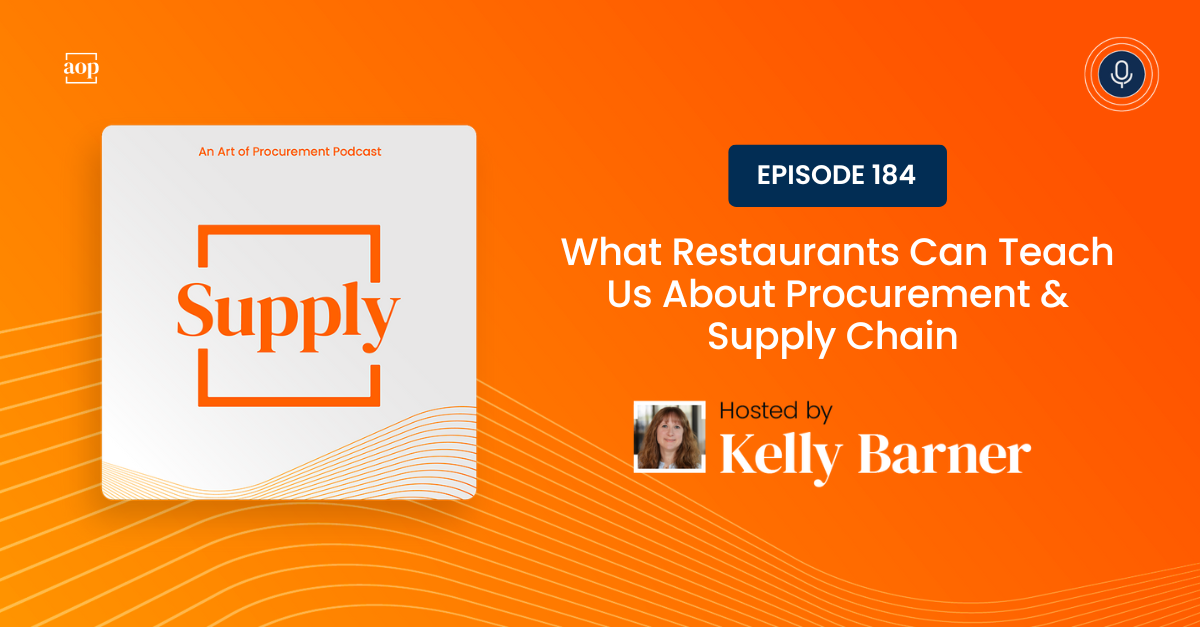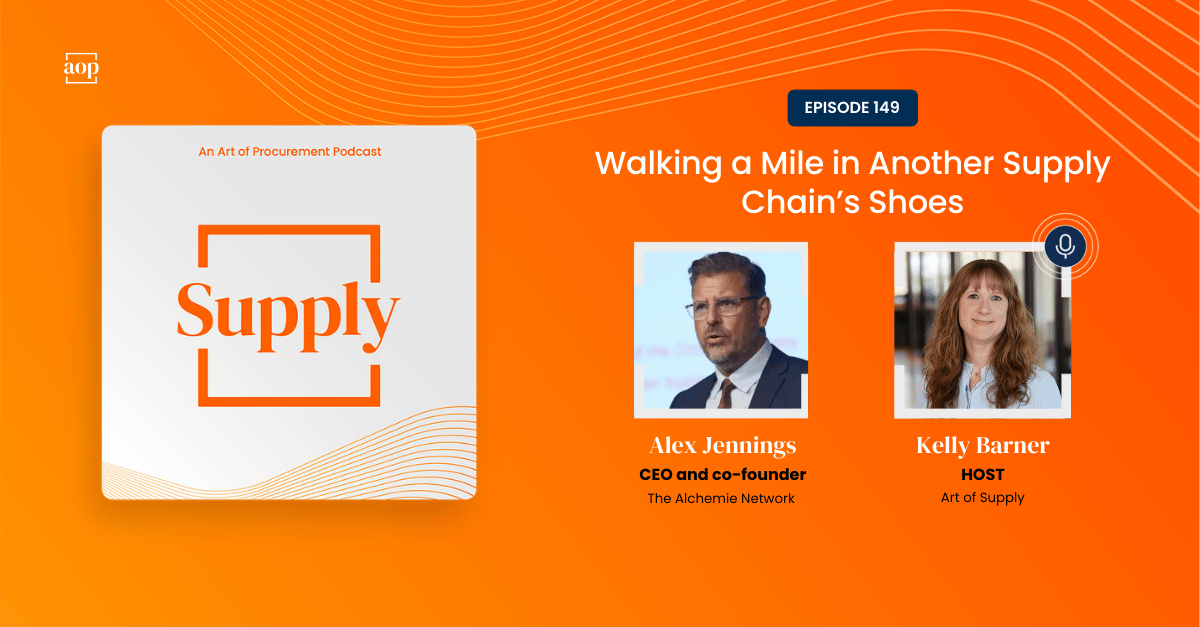
For over a decade, one public-private partnership has worked to make lifesaving medicines available in the most remote parts of Africa. Known as Project Last Mile, this collaboration includes the efforts and resources of organizations like The Global Fund, USAID, and The Bill & Melinda Gates Foundation.
The mission behind project last mile is worthy, and every member of the partnership has the best of intentions driving their involvement, but that does not mean the road to success was easy. It took years of patience, dedication, flexibility, and genuine camaraderie to earn the enviable reputation they enjoy today.
In this month’s Art of Supply interview, I sat down with Adrian Ristow, Executive Director of Project Last Mile and David Canarutto, Private Sector Relationship Manager at The Global Fund, to talk about the lessons they have learned along the way.
Seek First to Understand
There was no question that a critical need had been identified, and the members of the partnership definitely had the resources and knowledge required to solve it. But before the Project Last Mile team could start to bring those two sides together, they had to ensure mutual and comprehensive understanding.
“You can only get different cultures and values on the same page if you fully understand their context,” Adrian told me. “So we took our time, we took two or three visits to the country. We had some crazy meetings with some people, where I don’t think they knew why we were there, and neither did we. But it was a genuine offer to help and we needed to understand who would be the recipient of this work, and we didn’t want to be presumptuous on the type of support they needed.”
Avoiding presumptions was especially critical because it was the private sector being brought in to address challenges that the public sector hadn’t been able to resolve on their own.
“The context of what the public sector faces or Ministries of Health face are far more complicated when it comes to decision making and these types of things,” Adrian said. “So we worked really hard in building that understanding, and then that helped to then build the trust, which is what gets people together on the same page.”
Don’t Take the Quick Win
When lives are on the line, it would be easy to make the mistake of prioritizing speed. I know I would have made that mistake. But the Project Last Mile team knew from the outset that any solution put in place had to be sustainable, even if that meant taking a bit longer to establish.
“It was so important that we didn’t implement solutions where we just started, for example, putting stuff on Coke trucks, which might solve it. ’cause that could be a quick fix,” Adrian said.
“This is where our academic partners, the Yale Global Health Leadership Institute, were really helpful in building an understanding of what is the role of the public sector versus the private sector, and how important it is in a public private partnership that the private sector doesn’t take over accountability for aspects of serving a population that should always be in the domain of the public sector or the government. For us to therefore change our thinking to how do we do symptomatic solutions, like put stuff on tracks to rather build good systems and processes behind the scenes.”
Hard Numbers and Soft Facts
Despite the worthiness of Project Last Mile’s mission, they were still accountable to a number of stakeholder organizations and regularly had to communicate their progress in justification of the resources, time, and investments made. According to David Canarutto, the key was “hard numbers and soft facts.”
“From the hard number perspective, we look at the impact of the single projects and we look at what has been achieved in terms of going from a baseline to a new situation where the challenges have been addressed, or are in their way to being addressed,” David said. “We look at it from a partnership perspective in terms of country demand. How many active projects do we have? What we’ve noticed is that the scope has changed. Coke has many, many competencies, not only in last mile distribution, but around linking campaigns to behavior change through marketing.
Project Last Mile thinks expansively about how they partner with Coca-Cola, making the most of every capability area.
“There are ways that we can not only build up capabilities, but if and when the central medical stores decide to outsource part of the distribution, what does that look like?” David pointed out. “Can they access some of the IP from Coke or others around how to manage fleets or not manage fleets, contract management, total quality management approaches and such?”
Find the Flexibility to Make a Few Mistakes
With high visibility partners like USAID, The Bill & Melinda Gates Foundation, The Global Fund, and Coca-Cola, Project Last Mile knew from the start that their impact would be measured carefully.
“I must say that was something that made me a little bit nervous at the start of Project Last Mile,” Adrian admitted. “How are we going to be measured? “We called our early work a ‘learning laboratory’ for a reason. I pushed that term hard because it was really important that we wanted to make an impact in Tanzania. But if we were going to do something sustainable, we needed to have the flexibility to make a few mistakes and to refine our model along the way.”
Regardless of any mistakes that may have been made, there can be no question that the model, and the approach, and the partnership worked.




